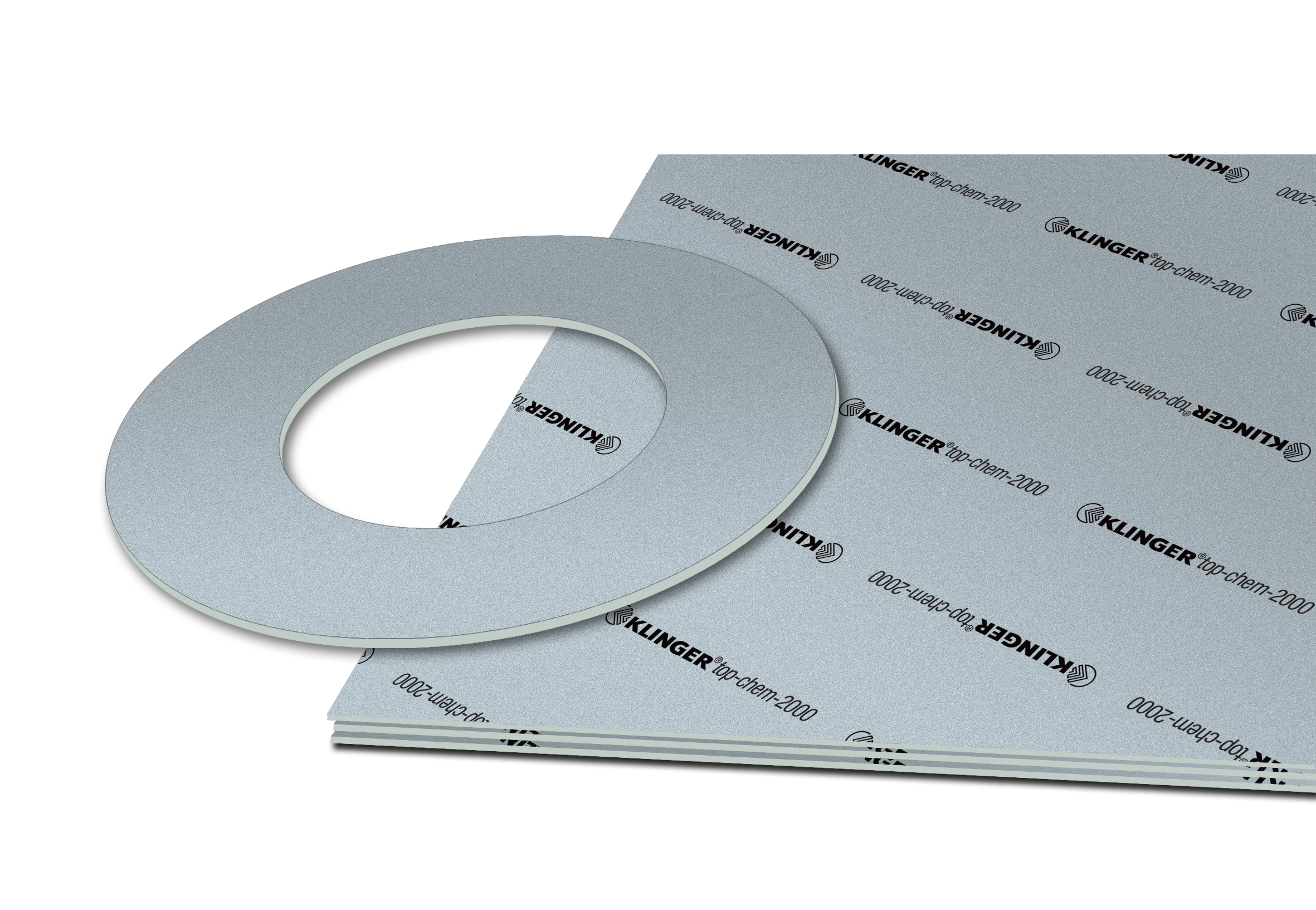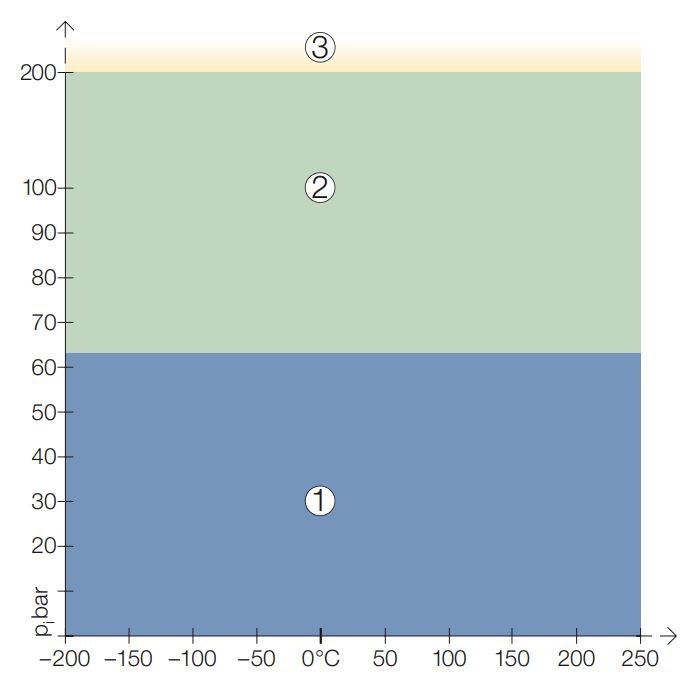KLINGER®top-chem 2000
Exceptional performance at high mechanical requirements
KLINGER®top-chem 2000 is a universal heavy-duty gasket material which offers exceptional performance in applications with high mechanical requirements at high temperatures. It is the only PTFE gasket material with a Fire-Safe Certificate.
Use KLINGER®top-chem 2000 in strongly acidic and alkaline applications as well as in steam and oxygen. Suitable for an extremely wide range of applications in the chemical and petrochemical industry, as well as in the ship building industry for the transport of chemicals. This material also meets FDA conformity.
Basis: PTFE Gasket material filled with SiC (Silicon carbide).
Use KLINGER®top-chem 2000 in strongly acidic and alkaline applications as well as in steam and oxygen. Suitable for an extremely wide range of applications in the chemical and petrochemical industry, as well as in the ship building industry for the transport of chemicals. This material also meets FDA conformity.
Basis: PTFE Gasket material filled with SiC (Silicon carbide).

Typical Values Refer to 2.0 mm Thick Material
| Compressibility ASTM F36 M | 4 % |
| Recovery ASTM F36 M | 50 % |
| Stress relaxation DIN 52913 30 MPa, 16 h/150°C 50 MPa, 16h/260°C |
28 MPa 36 MPa |
| KLINGER Cold/Hot Compression Test 50 MPa Thickness Decreases 73°F (23°C) Thickness Decreases 500°F (260°C) |
5 % 11 % |
| Tightness DIN 28090-2 | 0.08 mg/s x m |
| Thickness/Weight Increase H2 SO4, 100%, 18 h/23°C HNO3, 100%, 18 h/23°C NaOH, 100%, 72 h/110°C |
1 / 1 % 1 / 2 % 1 / 3 % |
| Density | 2.5 g/cm³ |
| Average surface resistance ρO | 6.9x10E12 Ω |
| Average specific volume resistance ρD | 2.2x10E12 Ω cm |
| Average dielectic strength Ed | 3.6 kV/mm |
| Average power factor 50 Hz |
0.166 tan δ
|
| Average dielectric coefficient 50 Hz | 10.6 ε r |
| Thermal conductivity λ | 0.60 W/mK |
| Color | Grey |
CERTIFICATES & APPROVALS
» DIN-DVGW
» WRAS approval
» DIN-DVGW W 270
» TA-Luft (Clean air)
» Oxygen tested
» Fire-Safe acc. to DIN EN ISO 10497
» KTW-Guideline
» FDA conformity
» DNV GL
» Regulation (EU), No, 1935/2004
KEY FEATURES & BENEFITS
» Resistant to creep and cold flow
» Consistent material composition
» High retention of the bolt load
» Superior chemical resistance
» No ageing of the material
The pressure/temperature graphs shown are the most current method of determining the suitability of a gasket material in a known environment. However, chemical compatibility must also be considered.
ρT diagram for thickness 2.0 mm:


In area 1 the gasket material is suitable using common installment practices subject to chemical compatibility
In area 2 appropriate measures are necessary for installation of the gasket to ensure maximum performance. Please call or refer to KLINGERexpert for assistance.
In area 3 do not install gaskets in these applications without first referring to KLINGERexpert or contacting KLINGER Thermoseal's technical support service.
In area 2 appropriate measures are necessary for installation of the gasket to ensure maximum performance. Please call or refer to KLINGERexpert for assistance.
In area 3 do not install gaskets in these applications without first referring to KLINGERexpert or contacting KLINGER Thermoseal's technical support service.
The ability of a gasket to make and maintain a seal depends not only on the style and quality of the gasket material, but also on medium being sealed, the flange design, the amount of pressure applied to the gasket by the bolts and how the gasket is assembled onto the flanges and tightened. These factors are beyond the manufacturer's control. Please take note of our installation manual in TECHNICAL RESOURCES.
